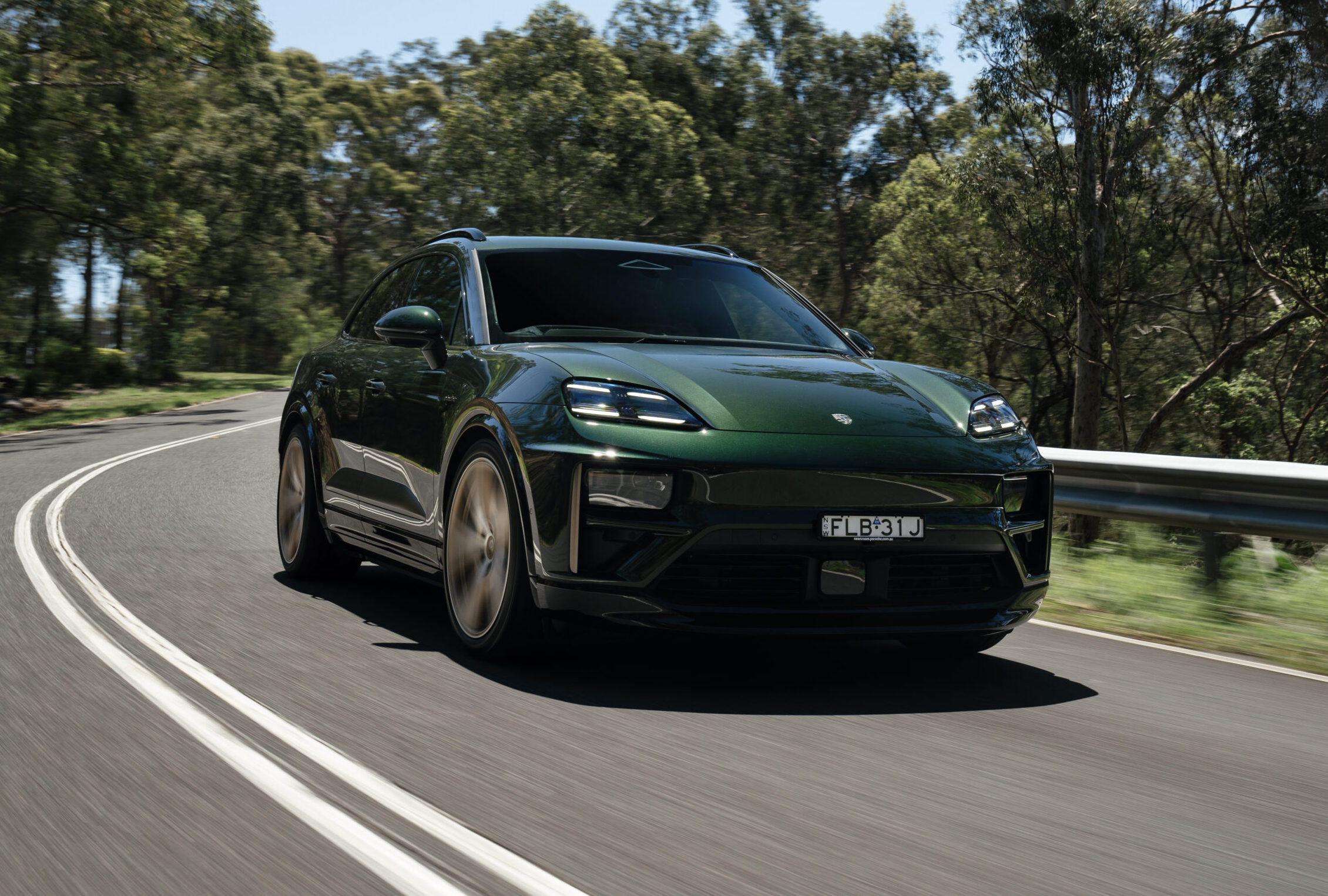Score breakdown
Things we like
- Talented on-road and off
- Feels rugged and suited for Australian conditions
- New turbo 2.4L puts welcome pep in its step; more cohesive with CVT
Not so much
- Lacks wireless phone charging
- Infotainment graphics functional but not pretty
- No head-up display
As a motoring journalist, it’s always a treat when you spot a Subaru Outback in the upcoming calendar. It’s just one of those cars where you know you’re in for a pleasant experience. This is a car that rarely puts a foot wrong.
The 2023 Subaru Outback update is headlined by a new-for-the-model 183kW/350Nm 2.4-litre turbocharged four-cylinder petrol engine, providing some welcome power, pace and towing capacity in comparison to the existing 138kW/245Nm 2.5-litre naturally aspirated unit.
Younger enthusiast readers may recognise this formula from Subaru’s back catalogue – the spirit of the Liberty GT lives on!
Elsewhere, there are several subtle quality-of-life updates, with wireless Apple CarPlay and Android Auto (now full screen!) fitted as standard, complemented by a simplified multi-function steering wheel topped off by various software improvements and subtle comfort updates.

JUMP AHEAD
- How much is it, and what do you get?
- How do rivals compare on value?
- Interior comfort, space and storage
- What is it like to drive?
- How is it on fuel?
- How safe is it?
- Warranty and running costs
- VERDICT
- Specifications
How much is it, and what do you get?
The new turbo powertrain is offered in existing Sport and Touring trims, usurping the top two positions in the range. It is not available with the eponymous base-grade Outback.
It means the Outback Sport XT begins from $52,190, with the flagship Outback XT Touring asking $55,990 (both before on-road costs). In other words, opting for the turbocharged engine commands a $5000 premium over the naturally aspirated equivalents.
| 2023 Subaru Outback range (pricing before on-road costs) | |
|---|---|
| Outback AWD | $42,690 (2021: $39,990) |
| Outback AWD Sport | $47,190 (2021: $44,490) |
| Outback AWD Touring | $50,990 (2021: $47,790) |
| Outback AWD Sport XT | $52,190 (new variant) |
| Outback AWD Touring XT | $55,990 (new variant) |
Headline standard features across the range include a portrait-style 11.6-inch infotainment touchscreen, digital driver information display, wireless Apple CarPlay and Android Auto, auto stop-start, Subaru Intelligent Drive (SI-Drive) modes, off-road X-Mode, auto-folding door mirror and hands-free powered tailgate.
Outback Sport and Outback Sport XT vehicles are treated to synthetic leather upholstery, further protected by a water-repellent coating.
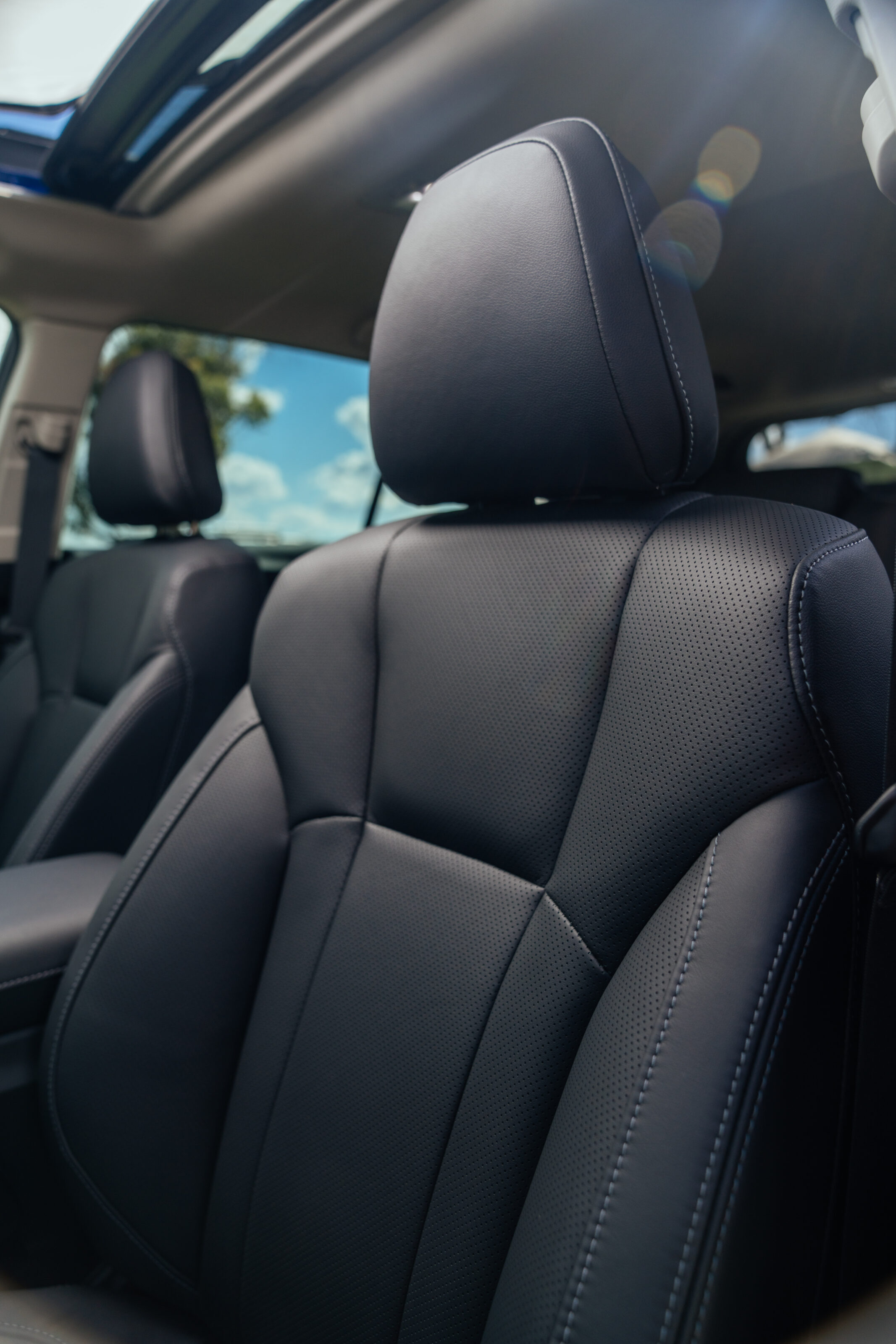
Flagship Outback Touring and Outback Touring XTs feature Nappa leather accented trim that further elevates the in-cabin atmosphere, also adding auto door mirror adjustment and auto driver seat adjustment, heated steering wheel, power-adjustable front seats with memory, front seat ventilation, nine-speaker Harman Kardon audio and a sunroof to the mix.
Features unique to the Outback XT include dual exhaust outlets, six-LED fog light units, exterior XT badging and suspension tweaks.
The latest iteration of Subaru’s comprehensive safety suite is also included, featuring eight airbags and virtually every active safety system you could think of.
How do rivals compare on value?
Despite its longroof proportions and the Subaru Liberty/Legacy roots of its distinctly Australian nameplate, the Outback is officially classed as a large SUV.
However, given its price point and five-seat layout, obvious popular rivals include medium SUVs such as the flagship Kia Sportage GT-Line (from $49,390), Mazda CX-5 GT SP Turbo (from $51,290) and top-spec Nissan X-Trail Ti-L AWD (from $52,990). All before on-road costs.
While rivals may pip the Outback in certain regards, such as passenger or cargo space, none of them boast the Outback’s unique mix of all-terrain talent and the on-road manners that stem from its passenger car origins.

Tech, comfort, space and storage
Instant impressions from the widely adjustable driver’s seat are of the solidity and durability Subaru excels at, balanced nicely with leather-wrapped (almost) everything.
The 11.6-inch tablet-style touchscreen commands attention, and is mostly intuitive to navigate, displaying a wide array of information.

Users of Android Auto will be overjoyed to know that the mirroring software now utilises almost all of the available digital real estate, whereas the previous vehicle made do with an almost laughable letterbox-style aspect ratio.
Physical switchgear for climate, window demisters, audio volume and radio tuner are very welcome considerations, easily adjustable without taking your eyes off the road.
Wireless phone charging and a head-up display are increasingly noticeable omissions in this day and age, however, there are easily accessible USB-A and USB-C ports under the central stack for device charging.
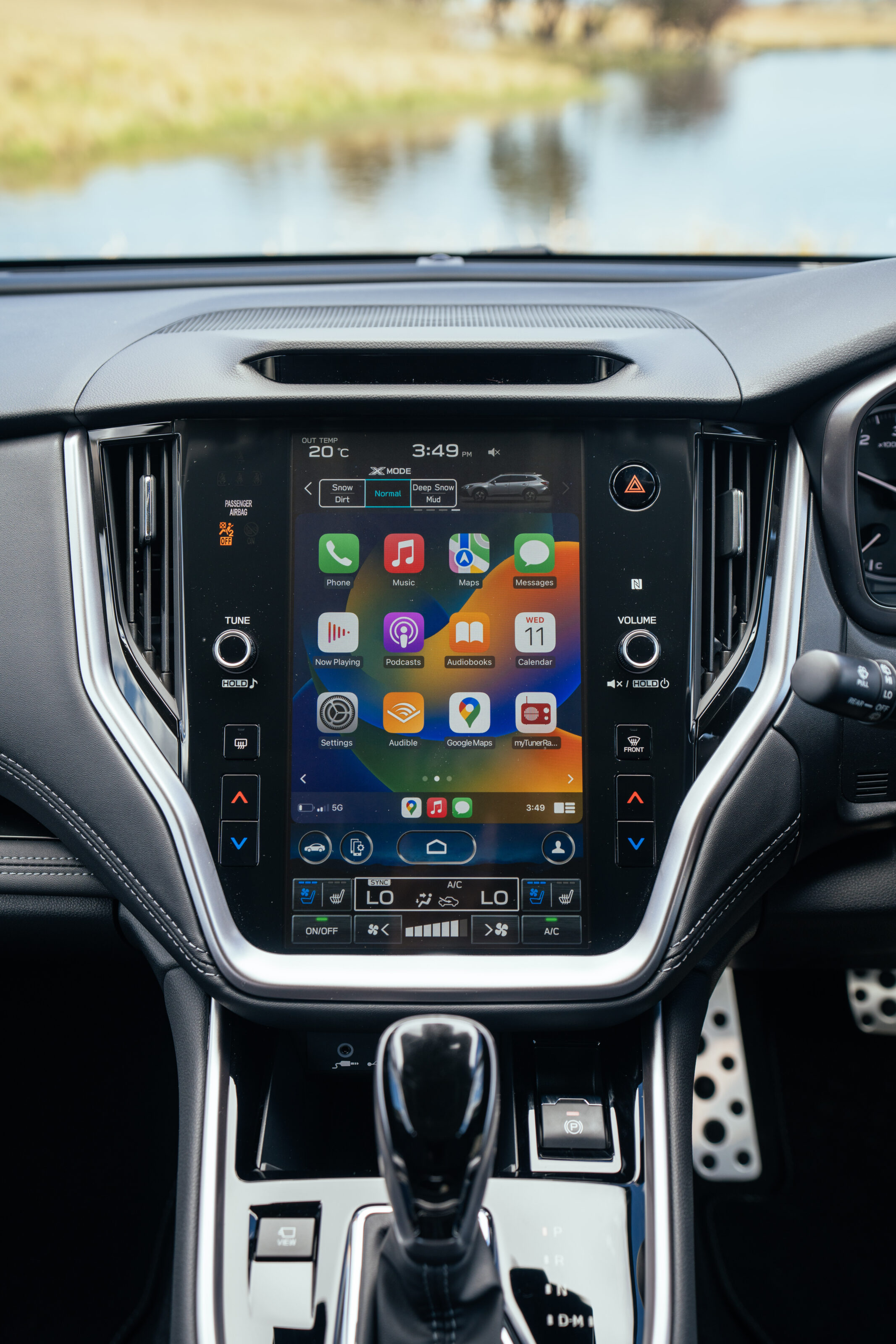
Pleasantries continue to the second row, which features agreeable knee room, with toe and headroom to spare when planting my 175cm frame behind my own driving position. Rear passengers are treated to two air vents, two USB ports with two cup holders in the central armrest and two further drink holders in each door.
Further out back (no pun intended), the boot measures an impressive 522 litres of cargo space, expanding to 1267 litres with the rear seats folded. There are also various tie-down points, a 12-volt outlet, a hands-free powered tailgate and storage nooks on each side.
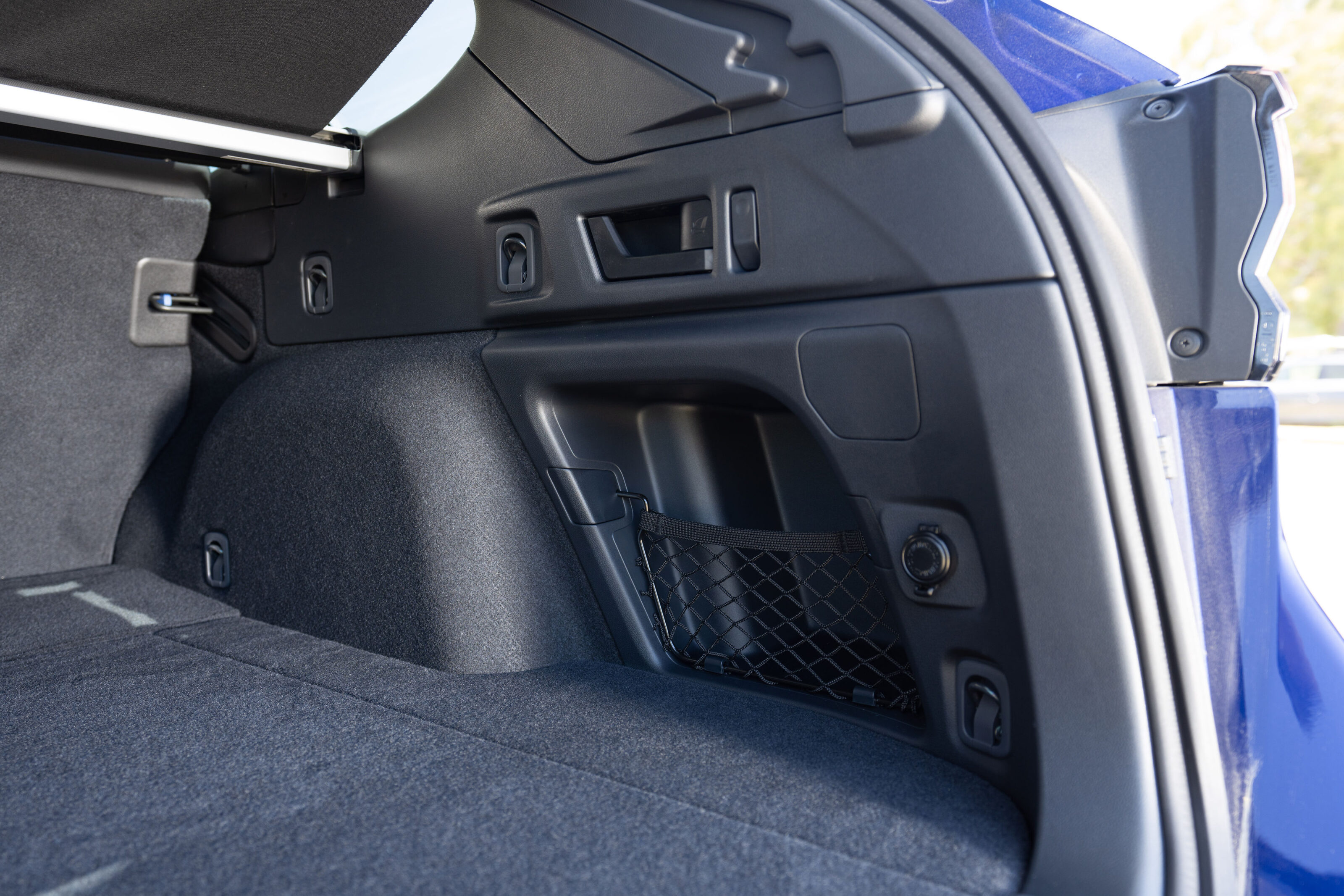
What is it like to drive?
The basics
| 2023 Subaru Outback XT drivetrain | |
|---|---|
| Engine | 2.4-litre boxer-4 turbo-petrol |
| Power | 183kW @ 5200-6000rpm |
| Torque | 350Nm @ 2000-4800rpm |
| 0-100km/h | 8.6 seconds (estimated) |
| Transmission | continuously variable |
| Body | 5-door, 5-seat large SUV |
| Fuel / tank | 95 RON / 63 litres |
| Fuel consumption | 9.0L/100km (ADR combined) |
| Boot space | 522L / 1267L |
Our launch route begins on the motorways out of Sydney, due west for the Blue Mountains. The Outback feels dense and sure-footed, with well-weighted steering.
Subaru brought along some naturally aspirated 2.5L models for comparison and on the motorway, the turbo’s increased in-gear response makes for a significant step in overtaking ability.
With more power and torque available for the continuously variable transmission (CVT) to exploit, the big monotone flare of revs under a heavy throttle remains but you’re sitting in that unpleasant drone zone only fleetingly. In the same conditions, the atmo 2.5-litre Outback leaves you basking in it.
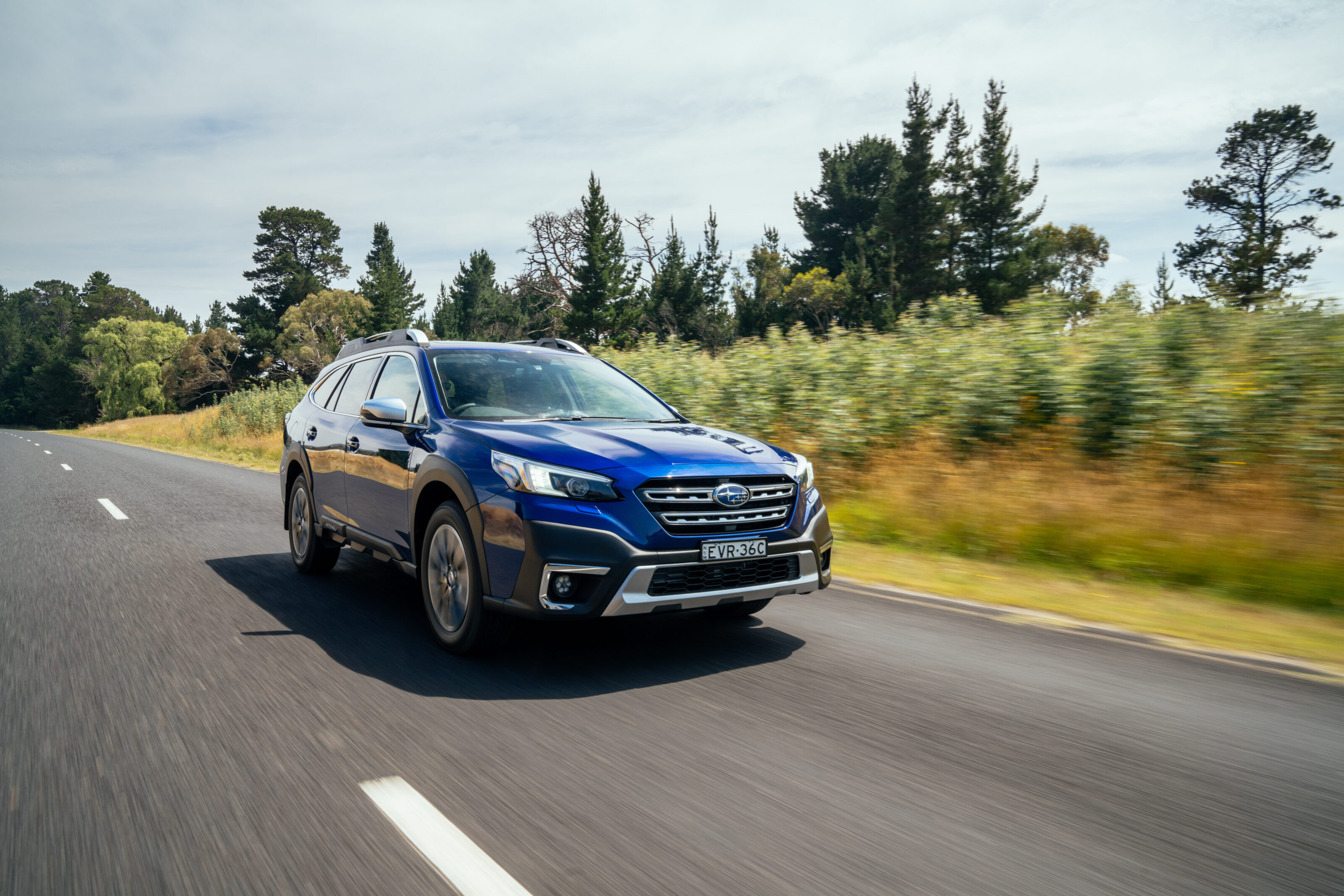
As we reach the mountain ranges, the added turbo power is starkly felt on a sharp ascent, too.
Subaru did not provide an official 0-100km/h claim, though independent tests by US publications have returned 8.6 seconds in their 0-60mph tests.
The naturally aspirated 2.5-litre unit was beginning to feel noticeably dated in comparison to younger competition, but the new engine returns the Outback into line with its increasingly sprightly rivals such as the Toyota RAV4 hybrid and turbocharged Mazda CX-5.
Even on fast descending, off-camber mountain switchbacks, the Outback’s roadholding remains confident, with decent noise, vibration and harshness suppression from its Bridgestone Alenza H/L33 tyres (measuring a square 225/60/18).
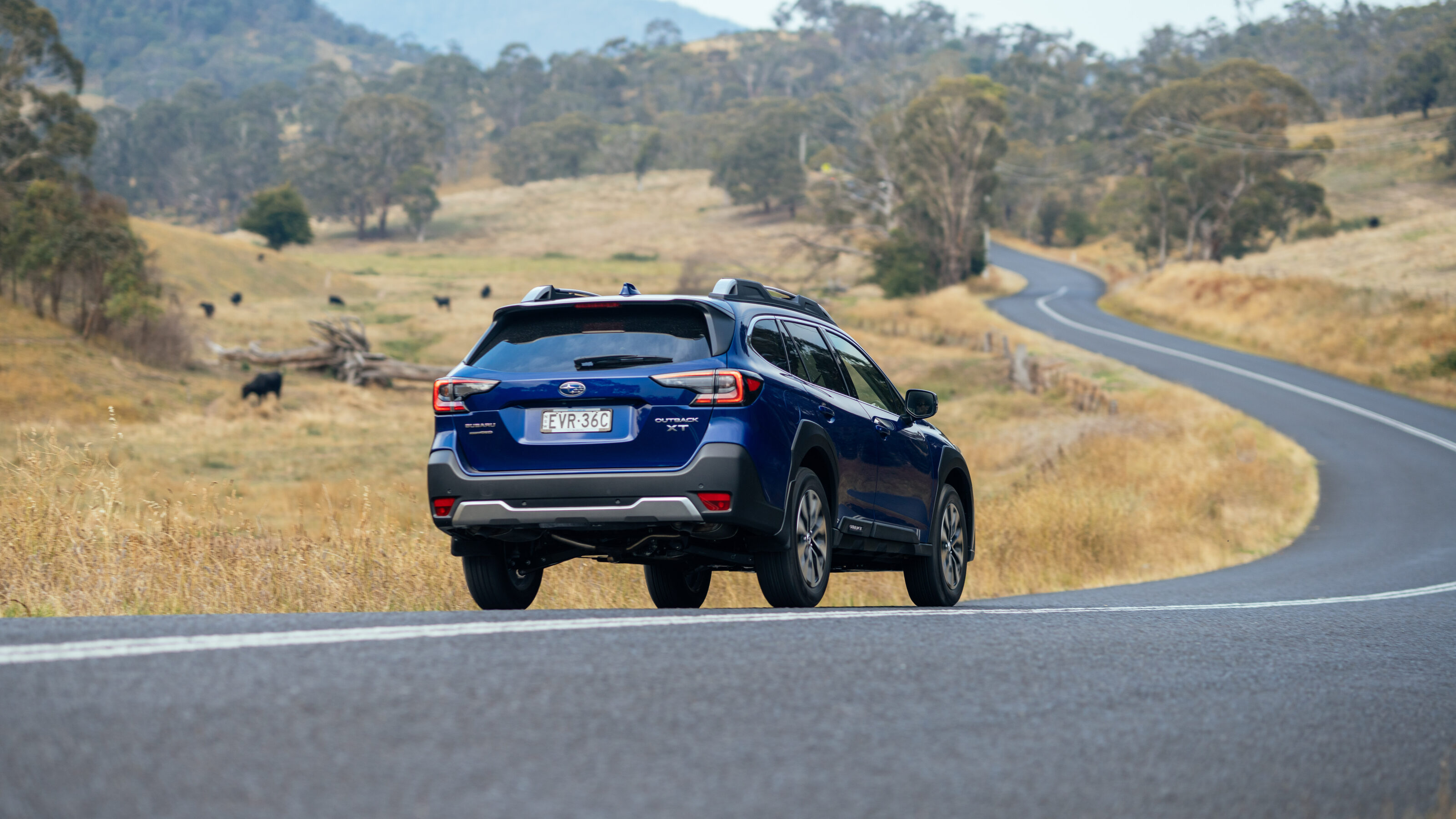
The addition of forced induction doesn’t just improve performance, but also increases the Outback’s towing capacity to 2400kg (up 400kg over a 2.5L Outback).
A little body roll is brought about by the higher centre of gravity, but the overall Outback driving experience feels much more ‘car-like’ than that of an SUV.
Still, this latest generation is more tied-down than its predecessor and, in naturally aspirated guise, it was always the engine that stuck out as the weak point in the Outback recipe.
The new XT antidotes that by elevating its performance envelope, providing a newfound level of cohesion with the rest of the Outback’s talents in regards to comfort, ruggedness and ease of use.
Even over patchy and potted stretches of tarmac, the Outback remains steadfast with a high degree of bump resistance and a resounding feeling of solidity.
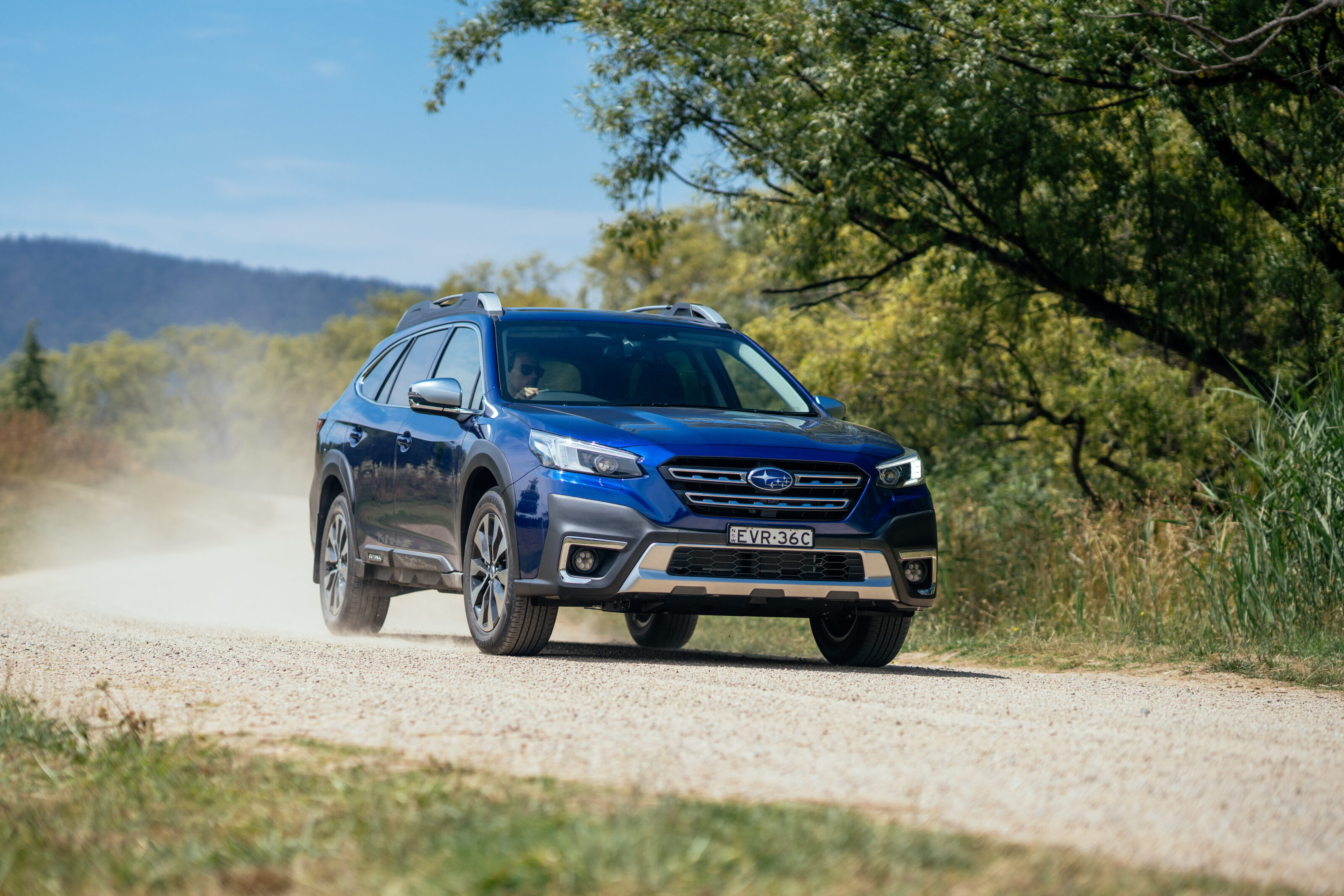
Of course, on-road dynamics are only part of the Outback remit and, to show off its capabilities, we were pointed down some very steep and narrow off-road tracks.
I’m still quite green when it comes to off-roading, and am always faced with a tinge of trepidation when such activities feature on an upcoming event program.
Chunky 60-section tyres and 213mm of ground clearance signal inherent capability, but the genius lies in the software of Subaru’s deftly intuitive ‘X-Mode’.
It really is an ‘idiot-proof’ system, enabling hill descent control, and comprising a no-slip general Snow/Dirt mode as well as a Deep Snow/Mud setting for more extreme obstacles.
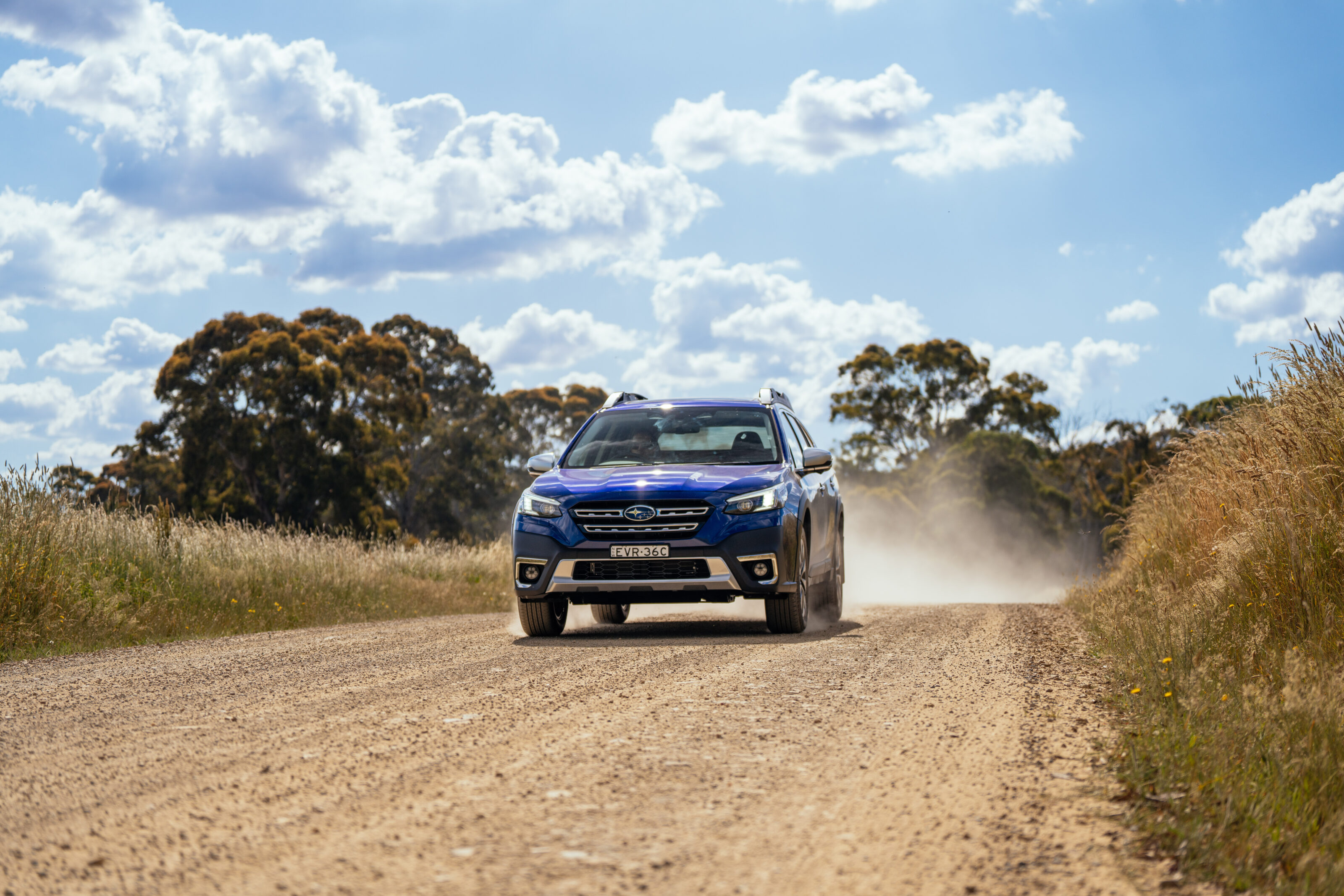
Hill descent control is engaged as soon as you enter X-Mode, defaulting to a crawl of 5km/h but will hold at the speed you throttle (or brake) to – up to a maximum of 40km/h.
X-Mode’s simpler Snow/Dirt setting is the primary mode here, as the vehicle leans on its deft traction control system to ensure minimal wheelspin. Entering the network of off-road tracks required descending a steep rocky incline. A front-facing camera helps with seeing over crests, and hill descent control sees you simply guiding the nose while covering the brake as the Outback confidently crawls down the slope.
A slight on-centre dead zone in the steering becomes a boon in traversing off-road tracks slowly with the ability to finely hone steering inputs. Whether faced with sharp descents, climbs or ruts, the deftly calibrated X-Mode system rendered the entire experience as little more than ‘point-and-shoot’.
The limits of the general Snow/Dirt settings were reached, however, when we were tasked with navigating a sharp incline with an immediate tight right-hander at the crest.
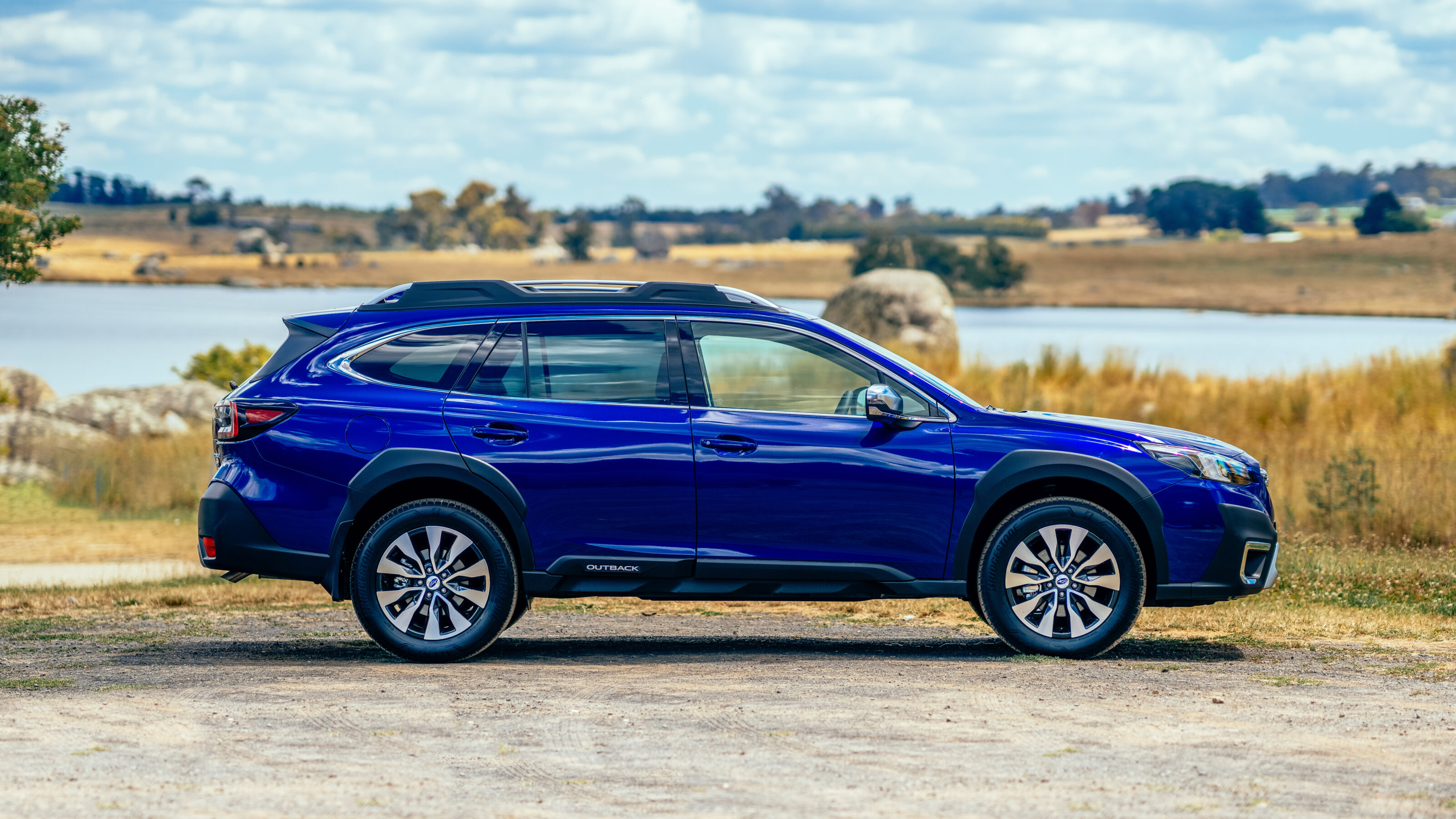
Left with its rear driver’s side wheel free-spinning in the air, X-Mode’s Deep Snow/Mud escape setting was engaged, which deactivates traction control and utilises torque-vectoring-by-brake to routinely pulsate each wheel so the car can identify which corners have purchase and subsequently biasing power to them.
Controlled bursts of wheel slip also aid escape and recovery from deep slush, snow and mud – whereby there’s often a hard-packed layer beneath the surface.
Whether on the road or off it, the XT impresses with the Outback’s traditional strengths of deft body control and a well-considered ride.
The new powerplant adds some much-needed pace and muscle but also benefits the overall user experience and refinement. In terms of the actual driving experience, there is very little to complain about.
How is it on fuel?
The more powerful turbocharged Outback XT claims 9.0L/100km, which is up somewhat against the naturally aspirated Outback’s 7.3L/100km claim.
A launch event, with drivers sharing cars, isn’t an ideal environment for testing claimed fuel consumption – so we’ll return to this with our upcoming week-long booking of the car.
How safe is it?
The 2023 Subaru Outback range bears a five-star ANCAP rating – awarded in 2021 under less-strict criteria.
Its airbag suite comprises dual front, dual front side, dual curtain, driver’s knee and front passenger cushions.
The latest iteration of Subaru’s vaunted EyeSight system includes adaptive cruise control, emergency lane-keep assist, lane centring function, lane departure prevention, lane departure warning, lane sway warning, lead vehicle start alert, pre-collision brake assist, pre-collision throttle management, autonomous emergency steering, brake light recognition, intelligent speed limiter and speed sign recognition.
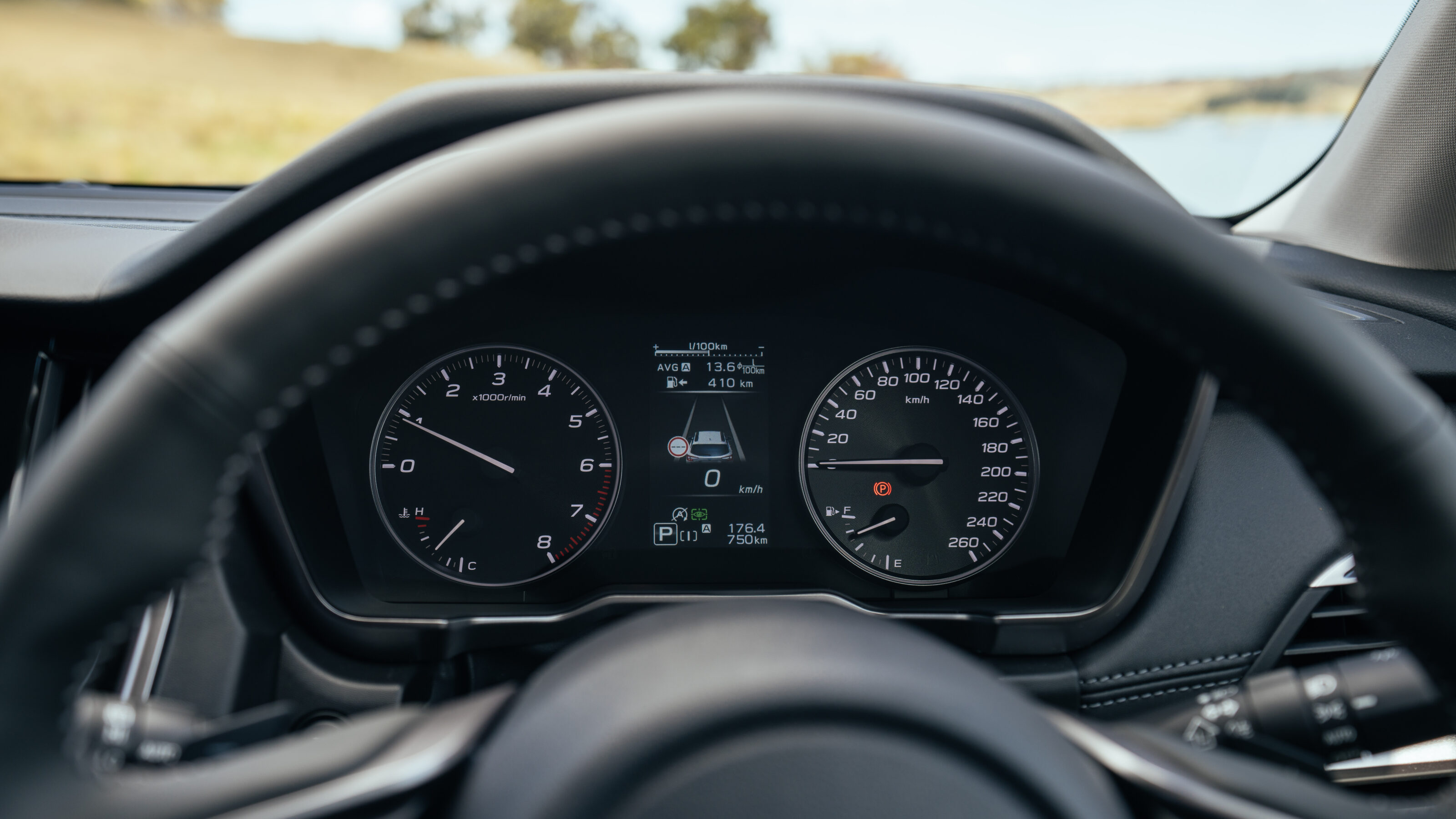
EyeSight combines with Subaru’s Vision Assist package, which includes adaptive driving beams, blind-spot monitoring, lane change assist, rear cross-traffic alert and reverse autonomous braking.
There are also driver distraction and drowsiness warnings to top off Subaru’s well-known dedication to safety.
Warranty and running costs
The 2023 Subaru Outback range is covered by Subaru’s five-year, unlimited-kilometre warranty, with new cars treated to 12 months of complimentary roadside assistance.
Service intervals for the current generation of Outback run every 12,500km or 12 months, whichever occurs first.
The Outback falls under Subaru’s five-year/62,500km capped-price servicing program which, according to Subaru’s website, indicates that buyers can expect to pay a maximum of $2748 over the first five years of ownership at an authorised Subaru service centre.
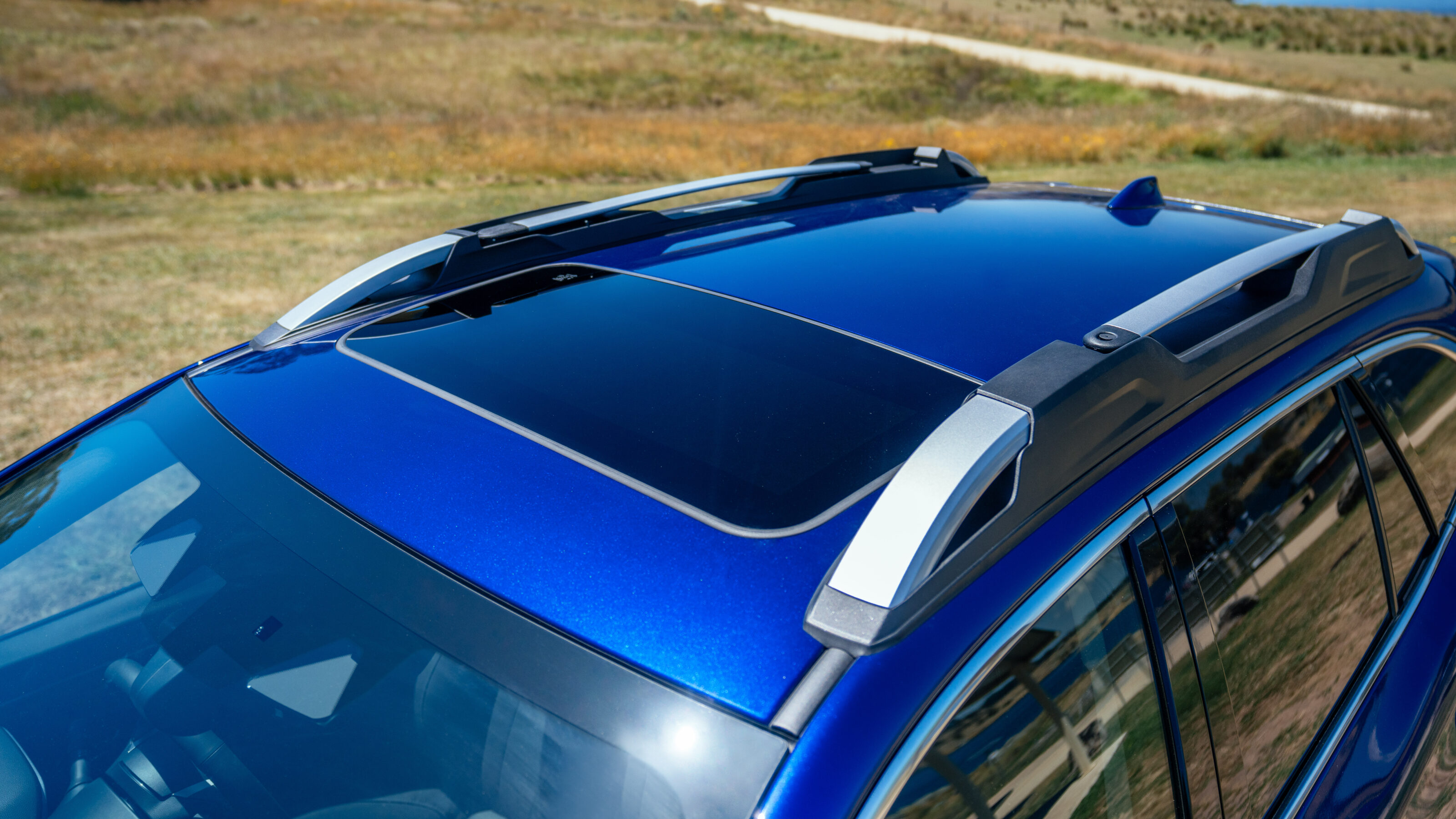
VERDICT
There is so much to like about the Subaru Outback as an effortless go-almost-anywhere family hauler, and the addition of the turbocharged 2.4-litre engine rectifies a previously glaring weak spot in the formula.
It is now the car we wanted when this generation of Outback landed in Australia at the end of 2021.
On the road, the turbocharged Outback is the most polished and enjoyable one yet, yet trades off none of its rugged vibes, off-road capability and wide breadth of talent.
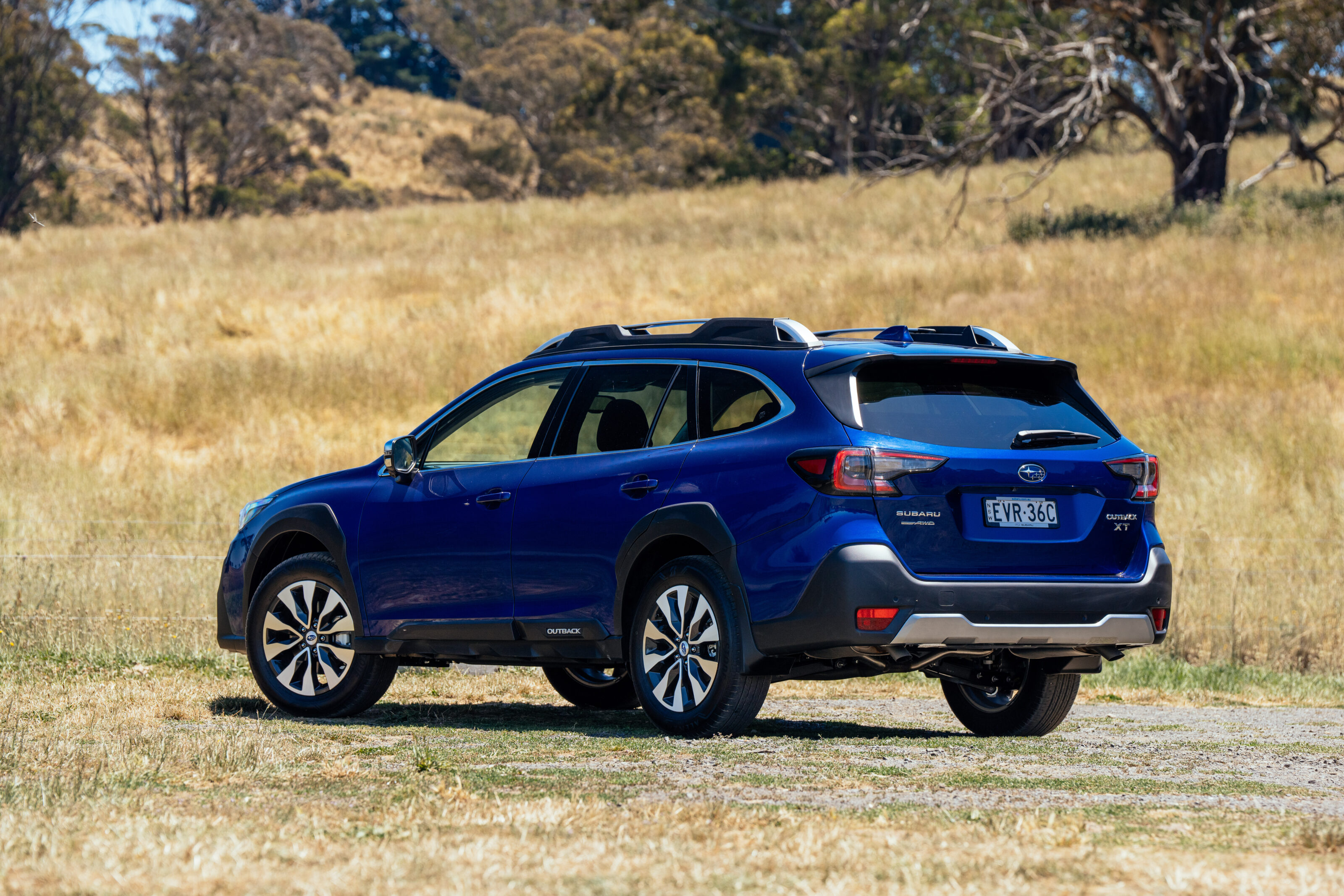
For the increasing number of Australian buyers seeking an outdoor ‘lifestyle’ vehicle, the Subaru Outback will fill the brief with poise and will go further than many conventional unibody SUVs when the bitumen comes to an end.
It will also deliver a level of on-road refinement that the ubiquitous ladder-frame ute-based SUV could never hope to achieve.
Beyond our now-extinct locally-made vehicles, few cars on the market exude that rugged feeling of suiting ‘Australian conditions’ so perfectly.
As the nameplate suggests, it feels as if the Subaru Outback was made for us.
| 2023 Subaru Outback specifications | |
|---|---|
| Model | Subaru Outback XT Touring |
| Engine | 2387cc boxer-4, turbo-petrol |
| Max Power | 183kW @ 5200-6000rpm |
| Max Torque | 350Nm @ 2000-4800rpm |
| Transmission | continuously variable |
| Weight | 1730kg |
| 0-100km/h | 8.6 seconds (estimated) |
| Economy | 9.0L/100km (ADR combined) |
| Price | $55,990 (before on-road costs) |
| On Sale | Now |
Score breakdown
Things we like
- Talented on-road and off
- Feels rugged and suited for Australian conditions
- New turbo 2.4L puts welcome pep in its step; more cohesive with CVT
Not so much
- Lacks wireless phone charging
- Infotainment graphics functional but not pretty
- No head-up display
We recommend
-
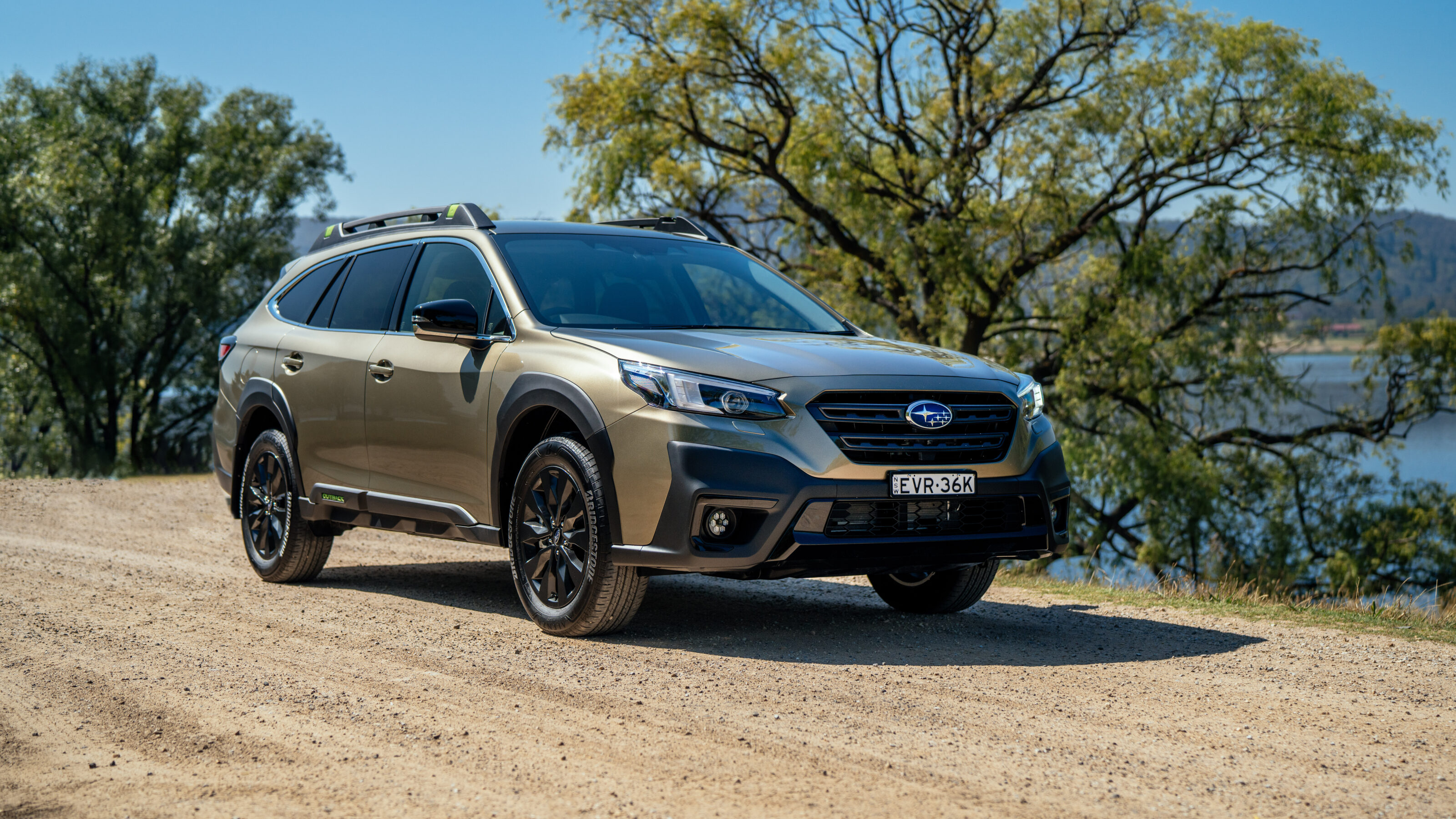 News
News2023 Subaru Outback pricing: XT turbo joins expanded range
Subie brings turbo power back to its petrol Outback
-
 News
News2023 Subaru Outback revealed, Australian debut confirmed
A heavy redesign and more tech headline the updated Subaru Outback's unveiling
-
 News
News2025 New Car Calendar: All the new cars coming to Australia
Take a look at our list of what is expected to launch in Australia in 2025 – plus those we might not see locally just yet





